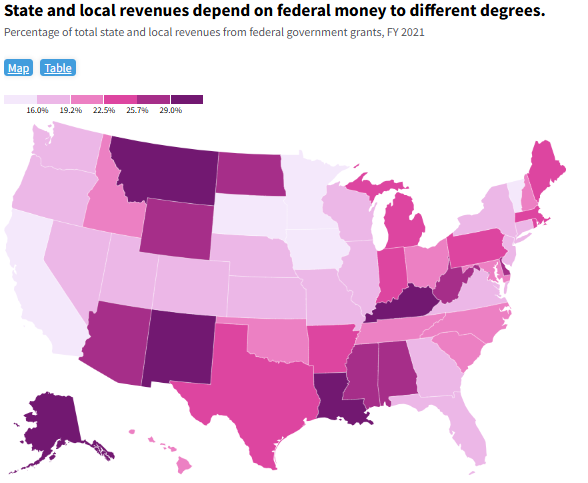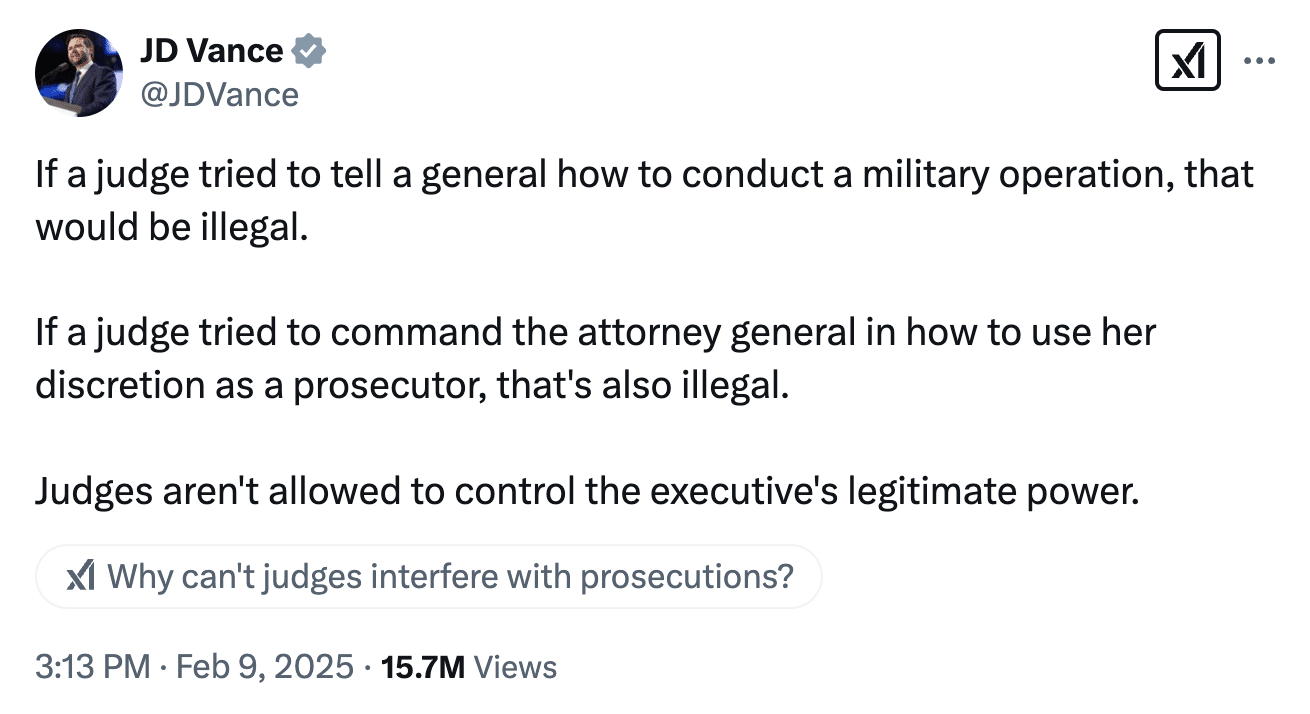Where Are the Republicans?
The "Dems in Disarray" narrative is old hat. Plus Bob Anthony on open-ear headphones.
Scroll down for the Digimentors Tech Tip from Robert S. Anthony. Want to advertise to our 15K subscribers on LinkedIn and Substack (with a 40% open rate)? Here’s our sponsorship kit. Email me: sree.sreenivasan1@gmail.com
***
I’VE SPENT MOST OF 2025 OVERSEAS and have been constantly answering questions about the various crises caused by Donald Trump, Elon Musk and JD Vance (including America abandoning its European allies). Here are two things that most non-Americans don’t realize about the US system:
The power of 6-3: Lower courts can be a check on some of the unlawful actions, but Trump has the Supreme Court in his pocket, with 6 justices out of 9, so he just has to wait for the cases to reach his rubber stamp court.
The threat of being primaried: Republicans have been told to get in line or Trump’s billionaires will put up more pliable candidates at the next primary election. This means anyone who stands up to Trump will almost certainly be out of work within two, four or six years (depending on when their term is up).
An episode of The Daily in early February titled, “Where are the Democrats?”, poured over the myriad ways in which the party is flailing after its second loss in the last decade to Trump. It’s a good question, but given the shape of the first month of the new administration, it’s the wrong question.
The “Dems in Disarray” narrative is almost a rite of passage in American politics. Although often correct in some ways, it seems like it’s always posed as an issue only when the GOP is behaving in ways that are borderline treasonous. It’s no different today. The episode of The Daily was published as Trump signed executive order after executive order, and Democrats were, in fact, absent.
The lack of urgency — combined with the failure to learn lessons from Mitch McConnell’s multi-decade masterclass in legislative maneuvering — has Democrats in a bad place as a party. But, to expect a single party coming off a major election loss and rife with internal divisions to save the core functions of the state is to live in a world of delusion. It’s not possible in any scenario, let alone the one we find ourselves in now.
As Musk, unelected Chairman and CEO of the United States, Inc., rips through core federal agencies, the most important question of the moment is, “Where is the GOP?” The Democratic Party has struggled—to put it charitably—under the weight of the Musk-Trump onslaught. But the way Republicans—especially those who serve in Congress—have rolled over to accommodate all of this is much more important.
Large portions of GOP voters should be livid. They’ve been preached to for decades about the hallowed nature of the Constitution, only to see it essentially torn to shreds in a few weeks. If Congress creates an agency and funds that agency, that agency can only be eliminated by Congress. Not by 20-somethings with no government experience.
These matters of the republic do not matter to Trump or Musk, and we now have confirmation that the Republican party as a whole has turned. Surely, much of that is out of fear, as we keep getting these “Privately, GOP Lawmakers Fret Trump and Musk” pieces. If you’re a duly elected Senator voting for RFK Jr. to lead the country’s health infrastructure, but you privately tell a Politico reporter that you don’t trust a man who’s made millions of dollars peddling the worst of the worst conspiracy theories about modern medicine, you need to grow a spine. Vote against him if you’re so nervous—that’s why you’re a Senator.
It seems like rank-and-file GOP voters are already stirring.
Here are a few reasons why:
Trump’s freeze on federal farming and rural small business subsidies is hurting people who tend to support him
The “accidental” firing of dozens of people directly working on the country’s nuclear weapons.
Musk’s DOGE employees accessed the Treasury Department’s most sensitive data systems.
DOGE people are trying to get access to very sensitive IRS data
New tax cuts will add more than $4.5 trillion to the U.S. deficit
Musk, who is unable to pass security checks to handle sensitive government information, is targeting the agencies overseeing (and in some cases investigating) his business empire.
Trump’s pick to run the FBI has millions of dollars’ worth of stock in Chinese e-commerce giant Shein.
The /fednews subreddit has been an invaluable resource over the last month. This megathread is packed with stories of those being forced out of work. These are your neighbors, cousins, and classmates. These are your park rangers, Forest Service firefighters, and water quality experts. These are aviation experts who keep the skies safe. These are people working to protect consumers from abusive practices by big banks.
Republicans in Congress are getting calls—lots of calls, but’s hard to see a path forward beyond real-world pain from the random and severe cuts to government services that Musk is implementing right now, legal or otherwise. Much of the pain in cuts to federal programs will harm voters in some of the deepest-red states in the country:
I know a lot of liberals would say, in no uncertain terms, that the idea of Democrats working with Republicans on anything should be ruled out completely. I agree. Democrats should hold up everything they can, concede nothing, and get in front of any camera they can right after. Then they should cajole Republicans. At some point, it cannot be the responsibility of one party to save the republic—our system simply is not built for that sort of pressure—but that’s where we are and it’s a disaster playing out in real-time.
Ezra Klein has an excellent piece on this, “The Republican Party’s NPC Problem — and Ours,” and I highly recommend it. This passage is especially important:
A January poll by CBS and YouGov found that 54 percent of Democrats wanted their congressional representatives to work with the Trump administration and 46 percent wanted relentless opposition. One month later, only 35 percent of Democrats wanted cooperation, and 65 percent wanted all-out opposition. That’s a lot of political capital the Trump administration burned in just one month. And for what?
Klein goes on to provide very useful context from the framers’ own language from The Federalist Papers. It’s worth your time:
Trump has slim majorities in Congress, but they are majorities, and he came into office with a minority Democratic party that was willing to deal. But, with Trump it was always about power—for Musk, it’s that sentiment multiplied exponentially. We the people—ALL of us—are left in the wind, waiting on the whims of an unengaged president and an oligarch with a nearly bottomless wallet.
The intention is clear as day and Trump’s team is not hiding it:
This is, of course, exactly what the judiciary is supposed to do. It says as much in the Constitution:
The judicial Power shall extend to all Cases, in Law and Equity, arising under this Constitution, the Laws of the United States, and Treaties made, or which shall be made, under their Authority….[T]to Controversies to which the United States shall be a Party; to Controversies between two or more States; between a State and Citizens of another State; between Citizens of different States…
It can’t get much clearer than that. If, for example, 22 states and the District of Columbia sue the federal government over the freezing of federal funds, the court’s decision is the decision of record.
As I wrote here two weeks ago, the House and Senate are where voters can have the most direct voice in how we are governed as a country. We have no say in what the Tesla board votes to pay Musk. We cannot control Apple’s new product line. We don’t have a vote on Facebook’s content moderation policies. We do, however, have the power to vote people into office who can represent our collective interests legislatively. We’ve been keen to give that power away, and we have a Congress that is, right this minute, failing its core, explicit Constitutional functions.
Democrats need to do much better than they are doing, but, unfortunately, we need Republicans to save us. It’s a chilling thought, given the last three decades, let alone the last three weeks.
— Sree | Twitter | Bluesky | IG | LinkedIn | FB | YouTube / Threads | Spread | TikTok
🗞️ #NYTReadalong: Sundays 8:30-10 am ET, Neil Parekh and I read a newspaper out loud on social media with a fab guest. Watch several years of archives here. Sponsored by MuckRack. Want to be—or suggest—a guest? neil@digimentors.group.
TECH TIP | Open-Ear Earbuds Let the Music In Without Shutting the World Out
By Robert S. Anthony
Each week, veteran tech journalist Bob Anthony shares a tech tip you don’t want to miss. Follow him @newyorkbob.
If you’ve ever been told to “keep your ears open,” you probably didn’t take it literally, but at the recent CES 2025 technology showcase in Las Vegas, there were literally dozens of new audio products designed to do exactly that.
Open-ear wireless earbuds fill the market segment between over-the-head headsets, which can provide terrific audio but may be too large or conspicuous for your listening situation, and earbuds, which are designed to fit snugly inside the ear but can be troublesome for those with smaller ear canals.
Open-ear earbuds have ear hooks which let them hang comfortably on the ear and direct sound directly to the eardrum without blocking the ear canal, a design which doesn’t stop the user from hearing the outside world.
As the name hints, Cleer Audio’s new Arc 3 Gaming wireless open-ear earbuds are aimed at gamers who can’t afford audio delays while they’re shooting up demons on the screen or trash-talking with their opponents. In addition to conventional Bluetooth 5.4 wireless connectivity, the 0.42-ounce units come with an Ultra Low Latency Qualcomm USB-C dongle. The dongle, which works with compatible PCs, mobile devices and gaming consoles, ensures audio transmissions with just 29 milliseconds of latency, according to Cleer.
The $235 Arc 3 Gaming earbuds support Dolby Audio and Dolby head-tracking technology, which adjusts the immersive audio as you turn your head, as well as active noise cancellation for outgoing audio with the help of Qualcomm Clear Voice Capture microphones.
A battery case which adds 40 hours to the earbuds’ rated 10 hours of use per charge has a touchscreen on the outside that can monitor the earbuds’ status and ultraviolet lighting on the inside to sanitize the earbuds between uses.
Shokz, better known for bone-conduction headsets like the new OpenMeet, recently launched the OpenFit 2 open-ear earbuds, a lightweight Bluetooth 5.4 unit which provides “all day comfort with no ear fatigue,” according to a Shokz product manager at a CES 2025 press session. Two microphones in each earbud assist in filtering noises out of a user’s voice during phone calls.
The $180 OpenFit 2 utilizes Shokz’s DualBoost audio technology, a setup which includes two drivers in each earpiece: a low-frequency driver enhanced with the company’s OpenBass 2.0 technology for deep bass sounds, and a high-frequency driver for midrange and higher notes. The 0.33-ounce earpieces provide 11 hours of use per charge, which can be extended to 48 hours when stored in the battery case, according to Shokz.
The CozyFit G1 Open Earbuds from Lytmi are priced at just $80 but promise noise-reduction technology for both incoming and outgoing audio. The 0.23-ounce earbuds include “active noise deduction” technology which emits negative sound waves that cancel out detected noises before they reach the eardrums, according to the company. Two microphones on each earbud help detect and remove noise from outgoing phone audio.
Lytmi promises up to eight hours of use per charge and up to 24 hours when the Bluetooth 5.2 units are stored in the battery case. The Lytmi earbuds, like the Shokz and Cleer units, can be configured with a free mobile app.
Did we miss anything? Make a mistake? Do you have an idea for anything we’re up to? Let’s collaborate! sree@sree.net and please connect w/ me: Twitter | Bluesky | IG | LinkedIn | FB | YouTube / Threads | Spread | TikTok









Nice to start. 4.2 in part two, how about this question What can blue state Democrats do to move red state Republican voters?
Nicely put, Sree. But two things. First, Trump's approval rating keeps rising. It's now at 53%; that's a higher than the below 49.8% share of the votes he received. Second, and this is so scary, even experts on autocracy, like Ruth Ben Ghiat, believed pre-inauguration that a strong man wouldn't tolerate a #2 who wielded the kind of power Musk does. We are looking at something no one has seen in the past 100s of years of governments. Do the democrats look weak. Certainly. But can obstruction in the house and senate actually do something in the face of Trump's cult of personality coupled with an Trump-allied totalitarian who is slashing through other normalities? It's very 1984-ish out there with Trump/Musk saying, "oh yeah, we can't keep prices down, sorry" and the next day saying, "everyone is getting a tax cut because of the billions we're saving the government." One drives around the country and sees Trump flags flying from houses of the working/lower classes. Trumpers are happy. More than half of our country loves Dear Leader.